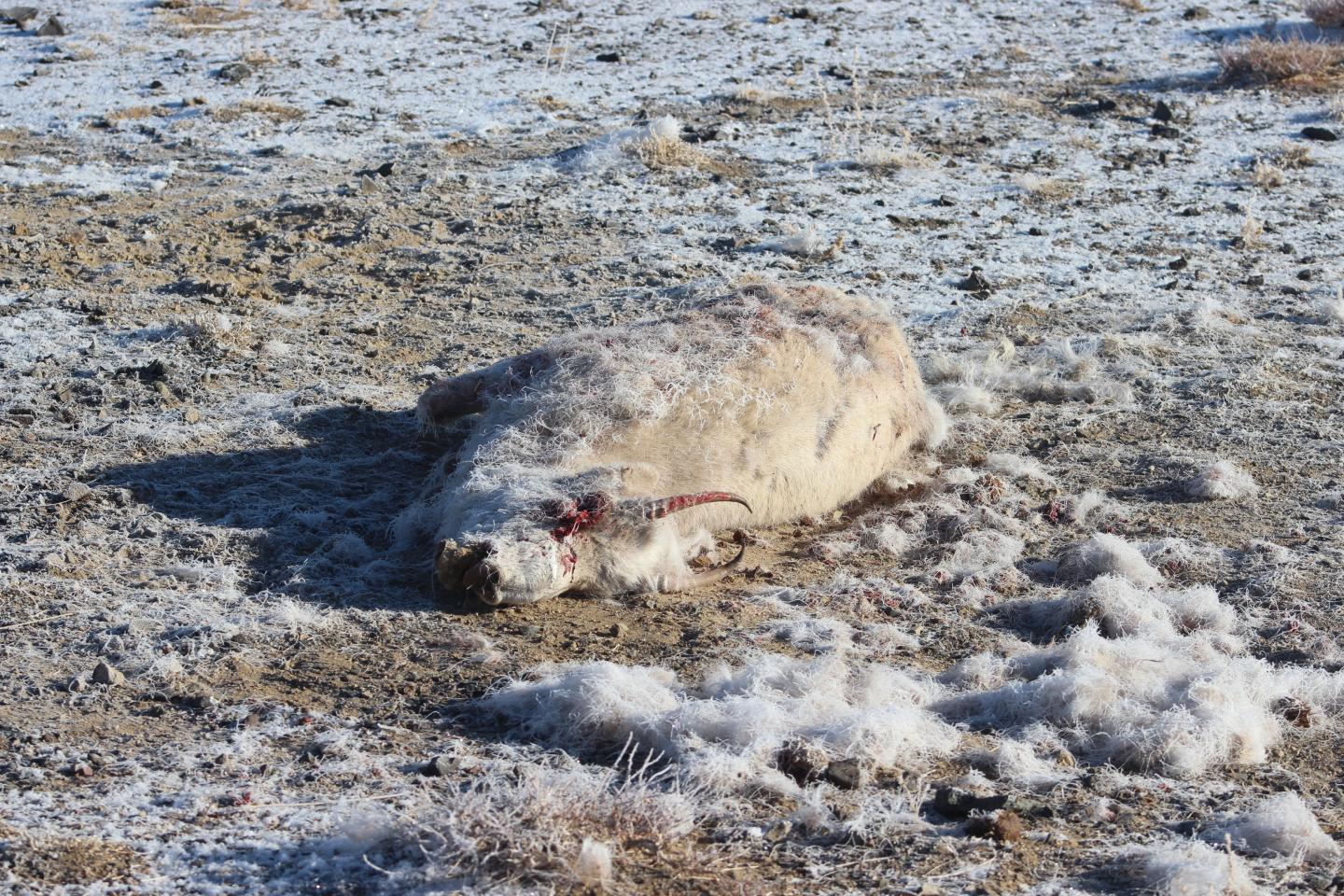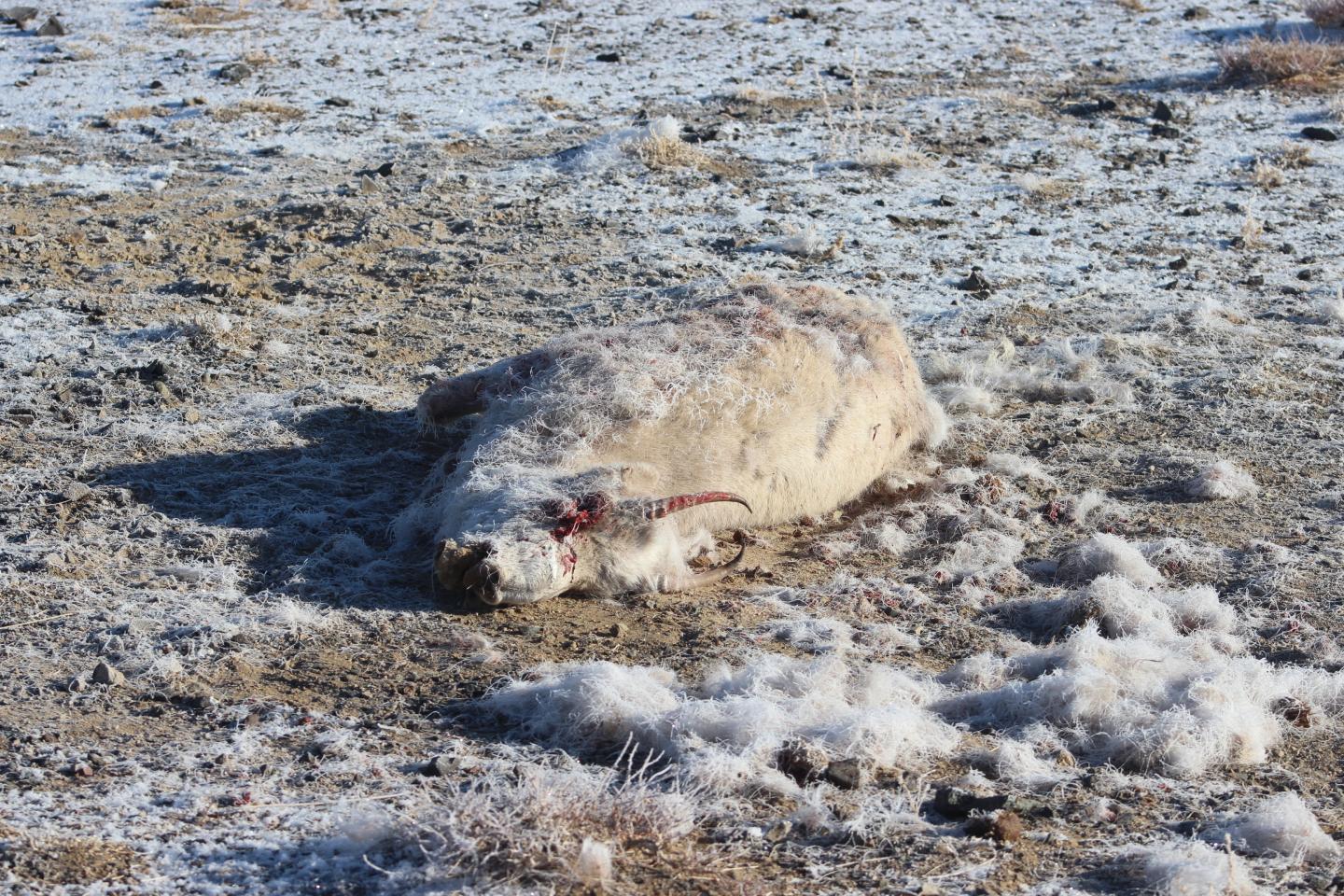
Credit: B. Ariunbaatar/WCS Mongolia
NEW YORK (October 15, 2018) – A team of conservationists from the Royal Veterinary College, WCS, Food and Agricultural Organization of the United Nations, University of Veterinary Medicine, Vienna published a letter in this week's edition of the journal Science on the threat of the virus peste des petits ruminants (PPR) to conservation.
PPR is a viral disease of sheep and goats, of great significance to the livelihood of rural communities, biodiversity conservation, and national and global economies. Repeated mass mortality events in wild steppe and mountain ungulates of the Middle East and eastern Asia is raising significant concerns about the conservation impact of this virus.
The mass mortality of over two-thirds of the critically endangered Mongolian saiga in 2017 is a dramatic illustration of the threat of PPR to wildlife. The situation is particularly bleak for the saiga antelope, as this is the second known mass mortality event due to infectious disease in less than two years, effectively reversing decades of conservation efforts to limit the impact of other threats, such as poaching for horn and meat.
Mass mortality events in saiga are linked to changes in climate, spillover of pathogens from livestock, and resource scarcity due to increasing competition with livestock for forage. The impact of livestock diseases on other wild ungulates is likely under-appreciated due a lack of systematic surveillance.
The authors say there is an urgent need to explicitly include wildlife protection as an objective of the PPR global eradication campaign.
Growing human and livestock populations put increasing pressure on natural resources; a better integration of rural development and conservation strategies is a critical challenge of our time.
To better understand this disease, Science for Nature and People Partnership SNAPP Steppe Health is gathering a diverse group of animal health and conservation professionals to measure and mitigate the impact of pathogens, such as PPR virus, at the livestock/wildlife interface.
See the full letter here.
###
WCS (Wildlife Conservation Society)
MISSION: WCS saves wildlife and wild places worldwide through science, conservation action, education, and inspiring people to value nature. To achieve our mission, WCS, based at the Bronx Zoo, harnesses the power of its Global Conservation Program in nearly 60 nations and in all the world's oceans and its five wildlife parks in New York City, visited by 4 million people annually. WCS combines its expertise in the field, zoos, and aquarium to achieve its conservation mission. Visit: newsroom.wcs.org Follow: @WCSNewsroom. For more information: 347-840-1242.
Media Contact
Stephen Sautner
[email protected]
718-220-3682
@TheWCS
http://www.wcs.org
Original Source
https://newsroom.wcs.org/News-Releases/articleType/ArticleView/articleId/11635/PPR-Virus-Poses-Threat-to-Conservation.aspx http://dx.doi.org/10.1126/science.aav4096





